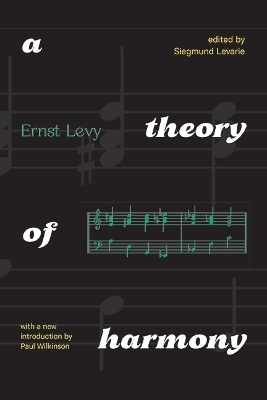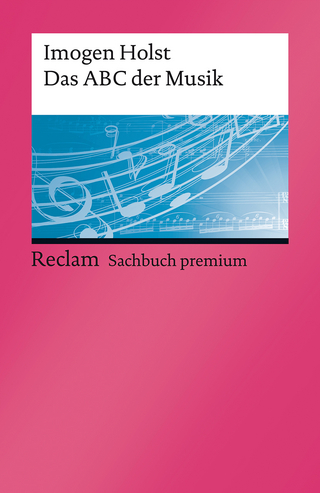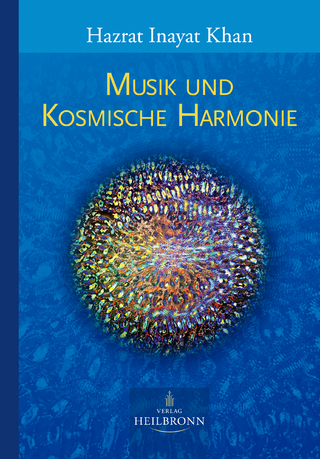
A Theory of Harmony
With A New Introduction by Paul Wilkinson
Seiten
2024
State University of New York Press (Verlag)
978-1-4384-9633-7 (ISBN)
State University of New York Press (Verlag)
978-1-4384-9633-7 (ISBN)
The classic work on Levy’s theory of negative harmony.
Ernst Levy was a visionary Swiss pianist, composer, and teacher who developed an approach to music theory that has come to be known as "negative harmony." Levy's theories have had a wide influence, from young British performer/composer Jacob Collier to jazz musicians like Steve Coleman. His posthumous text, A Theory of Harmony, summarizes his innovative ideas. A Theory of Harmony is a highly original explanation of the harmonic language of the modern era, illuminating the approaches of diverse styles of music. By breaking through age-old conceptions, Levy was able to reorient the way we experience musical harmony.
British composer/music pedagogue Paul Wilkinson has written a new introduction that offers multiple points of entry to Levy’s work to make this text more accessible for a new generation of students, performers, and theorists. He relates Levy's work to innovations in improvisation, jazz, twentieth-century classical music, and the theoretical writings of a wide range of musical mavericks, including Harry Partch, Hugo Riemann, and David Lewin. Wilkinson shows how A Theory of Harmony continues to inspire original musical expression across multiple musical genres.
Ernst Levy was a visionary Swiss pianist, composer, and teacher who developed an approach to music theory that has come to be known as "negative harmony." Levy's theories have had a wide influence, from young British performer/composer Jacob Collier to jazz musicians like Steve Coleman. His posthumous text, A Theory of Harmony, summarizes his innovative ideas. A Theory of Harmony is a highly original explanation of the harmonic language of the modern era, illuminating the approaches of diverse styles of music. By breaking through age-old conceptions, Levy was able to reorient the way we experience musical harmony.
British composer/music pedagogue Paul Wilkinson has written a new introduction that offers multiple points of entry to Levy’s work to make this text more accessible for a new generation of students, performers, and theorists. He relates Levy's work to innovations in improvisation, jazz, twentieth-century classical music, and the theoretical writings of a wide range of musical mavericks, including Harry Partch, Hugo Riemann, and David Lewin. Wilkinson shows how A Theory of Harmony continues to inspire original musical expression across multiple musical genres.
Ernst Levy (1895–1981) was a Swiss music theorist, composer, and conductor.
New Introduction
Paul Wilkinson
Editor’s Preface to the First Edition
Pitch Designations
Foreword to the First Edition
1. Tone Structure
2. Polarity
3. The Triad
4. Consonance-Dissonance
5. The Natural Seventh
6. Temperament
7. Tonal Functions of Intervals
8. Tonal Functions of Triads
9. Tonal Functions of Nontriadic and Compound Chords
Summary
Appendices
A. Examples to Chapter 8
B. Comments on the Text by Hugo Kauder
| Erscheinungsdatum | 03.01.2024 |
|---|---|
| Einführung | Paul Wilkinson |
| Zusatzinfo | Total Illustrations: 111 |
| Verlagsort | Albany, NY |
| Sprache | englisch |
| Maße | 152 x 229 mm |
| Gewicht | 227 g |
| Themenwelt | Kunst / Musik / Theater ► Musik ► Musiktheorie / Musiklehre |
| Geisteswissenschaften ► Philosophie ► Philosophie der Neuzeit | |
| ISBN-10 | 1-4384-9633-8 / 1438496338 |
| ISBN-13 | 978-1-4384-9633-7 / 9781438496337 |
| Zustand | Neuware |
| Informationen gemäß Produktsicherheitsverordnung (GPSR) | |
| Haben Sie eine Frage zum Produkt? |
Mehr entdecken
aus dem Bereich
aus dem Bereich
Grundbegriffe, Harmonik, Formen, Instrumente
Buch | Softcover (2021)
Philipp Reclam (Verlag)
7,80 €


